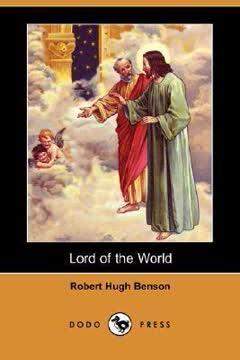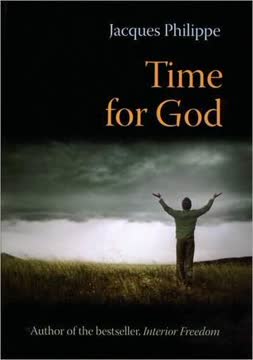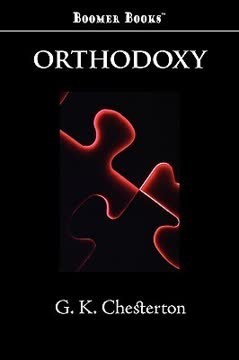Plot Summary
Twilight of Faith
In the early 21st century, the world has shifted away from religion, especially Christianity, toward a secular, materialist, and humanitarian order. The Catholic Church, once a global force, is now a marginalized remnant, its numbers dwindling and its influence nearly extinguished. The old religious certainties have been replaced by a new faith in humanity, science, and progress. The world is organized into vast superstates, and the last vestiges of supernatural belief are seen as dangerous relics. In this atmosphere, a few faithful Catholics, like Father Percy Franklin, struggle to maintain their faith and identity, even as the world around them grows increasingly hostile and incomprehensible.
The New World Order
The world is now divided into three great powers: the Eastern Empire, the American Republic, and the European Confederation. Nationalism and religious divisions have been replaced by a universal Humanitarianism, a creed that exalts man as the measure of all things. The new order is efficient, technologically advanced, and seemingly peaceful, but it is also spiritually empty. The state controls all aspects of life, and dissent—especially religious dissent—is not tolerated. The Catholic Church is confined to Rome and Ireland, and its adherents are viewed with suspicion. The world's leaders, including the charismatic Oliver Brand, believe that the final obstacles to universal peace are about to be swept away.
Felsenburgh Emerges
Into this world steps Julian Felsenburgh, a mysterious and magnetic figure from America. He is a master orator, a polyglot, and a man of impeccable character. Felsenburgh's rise is meteoric: he negotiates peace between East and West, is hailed as a savior in city after city, and is soon elected President of Europe. His message is one of universal brotherhood, tolerance, and the worship of humanity itself. To his followers, he is the incarnation of all their hopes; to the few remaining Christians, he is a terrifying enigma. Felsenburgh's presence seems to fulfill the world's longing for a leader who can unite all men, but beneath the surface, a darker purpose is at work.
The Last Priesthood
Father Percy Franklin, now a bishop, is one of the last defenders of the Catholic faith in England. He is surrounded by apostasy, indifference, and the relentless advance of the new order. The Church is under siege, its priests defecting or being driven underground. Percy's own friend, Father Francis, loses his faith and leaves the Church, a sign of the times. Yet Percy remains steadfast, drawing strength from prayer and the sacraments. In Rome, the Pope and a handful of cardinals struggle to hold the Church together, even as the world prepares to extinguish it forever. The faithful are called to a new Order of Christ Crucified, a last desperate attempt to preserve the faith through martyrdom and witness.
Mabel's Awakening
Mabel Brand, Oliver's wife, is a product of the new world: intelligent, sensitive, and devoted to the Humanitarian ideal. Yet she is haunted by doubts and a growing sense of emptiness. A chance encounter with death and a Catholic priest shakes her certainties. As the world celebrates its new unity, Mabel finds herself increasingly alienated, unable to share in the triumphalism of her peers. The violence unleashed against the last Christians, and the cold logic of the new order, drive her to despair. She seeks answers from former priests, but finds only the echo of a faith she cannot grasp. Her personal crisis mirrors the spiritual crisis of the age.
The Humanitarian Creed
The new religion of the world is officially inaugurated: the Worship of Man. Ancient churches are repurposed for Humanitarian ceremonies, and the state mandates attendance at quarterly festivals celebrating Maternity, Life, Sustenance, and Paternity. The rituals are grand, the music stirring, the symbols powerful—but God is absent. Felsenburgh is hailed as the Son of Man, the Saviour of the World, the Incarnation of the Human Ideal. The masses are swept up in a frenzy of adoration, but the few remaining Christians see in this the fulfillment of ancient prophecies: the world has enthroned the Antichrist. The line between religious and secular is erased, and the last barriers to total conformity are removed.
The Fall of Rome
The final blow falls on the Catholic Church. A plot by desperate Catholics to destroy the Abbey in London is discovered and used as a pretext for a worldwide purge. Mobs sack churches, murder priests, and burn convents. The Pope and the cardinals, gathered in Rome, are targeted for annihilation. The city is destroyed by a fleet of volors (airships) carrying explosives, and the heart of Christianity is wiped from the earth. The world rejoices at its deliverance from superstition, and Felsenburgh is acclaimed as the bringer of peace. The last Christians are hunted down, and the Test Act is enforced: to confess belief in God is now a capital crime.
The Test of Conscience
In the aftermath of Rome's destruction, the world is swept by a wave of apostasy. Even among the faithful, many falter. The Test Act requires every citizen to deny belief in God or face death. Some, like Oliver Brand's former secretary Phillips, are unable to choose and are remanded for further examination. Others, like Mabel, are driven to the brink of suicide by the emptiness of the new order. The Pope, now in exile in Nazareth, gathers the last cardinals and bishops for a final council. The Order of Christ Crucified is called to witness, and the faithful are urged to hold fast, even as the world closes in for the kill.
The Worship of Man
The world's worship reaches its climax in a grand festival in London's Abbey. Felsenburgh appears in person, and the masses hail him as Lord and God. The ceremonies are magnificent, the emotion overwhelming, the sense of unity intoxicating. Mabel, present in the crowd, is swept up in the ecstasy, but at the same time feels the abyss opening beneath her. The last vestiges of Christianity are erased, and the world gives itself wholly to its new god. The Pope, in Nazareth, prepares for the end, knowing that the final confrontation is at hand.
The Pope in Exile
In a humble house in Nazareth, the Pope—now Silvester III—presides over the remnant of the Church. The cardinals and bishops gather in secret, and the faithful are called to martyrdom. The world's armies prepare to strike the final blow, and the Pope, in a vision, sees that the end is near. Yet he is filled with peace, certain that Christ will not abandon his Church. The faithful gather for one last mass, and the Pope gives them his blessing. Outside, the sky darkens, and the world's airships close in for the kill.
The Final Council
As the world's forces encircle Nazareth, the Pope and his followers celebrate mass and adore the Blessed Sacrament. The faithful are filled with a supernatural peace, even as the end approaches. The world's leaders, led by Felsenburgh, prepare to unleash their final weapon. The faithful are offered a chance to escape, but most choose to remain. The Pope assures them that he has seen a vision of God, and that the victory is already won. The last Christians prepare to die, confident that their sacrifice will not be in vain.
The End of the World
The world's airships descend on Nazareth, and the last mass is celebrated. The faithful sing as the bombs fall, and the world is consumed in fire. Felsenburgh, the Antichrist, presides over the destruction, but the faithful are united with Christ in their martyrdom. The world that rejected God is destroyed, and the victory of Christ is revealed in the midst of apparent defeat. The story ends with the consummation of all things, as the old world passes away and the new creation dawns.
Characters
Father Percy Franklin
Percy Franklin is the central figure of the novel, a Catholic priest in England who rises to become the last Pope, Silvester III. Intelligent, sensitive, and deeply spiritual, Percy is a man of prayer and action, struggling to maintain his faith in a world that has turned against God. He is marked by a striking physical resemblance to Felsenburgh, the Antichrist, symbolizing the ultimate confrontation between Christ and the world. Percy's journey is one of increasing isolation, suffering, and ultimately martyrdom, but he remains steadfast, drawing strength from the sacraments and his vision of God. His psychological depth and spiritual resilience make him the novel's true hero.
Julian Felsenburgh
Felsenburgh is the enigmatic and magnetic leader who unites the world under the banner of Humanitarianism. He is a master of language, a political genius, and a figure of almost supernatural charm. To his followers, he is the incarnation of all their hopes; to the last Christians, he is the Antichrist foretold in prophecy. Felsenburgh's psychological power lies in his ability to embody the world's longing for unity, peace, and self-worship, while at the same time ruthlessly suppressing all dissent. He is both the world's messiah and its destroyer, a chilling portrait of evil disguised as good.
Mabel Brand
Mabel is the wife of Oliver Brand and a symbol of the modern, secular woman. Intelligent, idealistic, and emotionally complex, she is initially devoted to the Humanitarian creed, but is gradually undone by its emptiness and cruelty. Her spiritual crisis mirrors the larger crisis of the age, as she is drawn to the beauty of Christianity but unable to believe. Mabel's descent into despair and suicide is one of the novel's most poignant arcs, illustrating the cost of a world without God and the hunger for meaning that cannot be satisfied by ideology alone.
Oliver Brand
Oliver is a rising star in the new world order, a committed Humanitarian, and a key architect of the anti-Christian regime. He is intelligent, energetic, and utterly convinced of the rightness of his cause. Yet he is also emotionally dependent on Mabel, and her loss leaves him hollow. Oliver's journey is one of increasing fanaticism and eventual disillusionment, as he witnesses the consequences of the world he has helped create. His psychological complexity lies in his ability to rationalize cruelty in the name of progress, and his ultimate inability to save himself or those he loves.
Father Francis
Father Francis is a friend and colleague of Percy Franklin, a gentle and melancholy man who is ultimately unable to withstand the pressures of the new world. His apostasy is a sign of the times, and his psychological struggle reflects the difficulty of maintaining faith in an age of doubt. Francis's loss is a personal blow to Percy and a symbol of the Church's vulnerability.
The Pope (Silvester III)
Elected in secret after the destruction of Rome, Silvester III (Percy Franklin) is the spiritual leader of the remnant Church. He is a figure of humility, courage, and supernatural faith, guiding his flock through the final tribulation. His psychological strength lies in his ability to see beyond the immediate catastrophe to the ultimate victory of Christ, and his willingness to embrace martyrdom for the sake of the faith.
Mr. Francis
Mr. Francis is a former Catholic priest who now serves as a master of ceremonies for the new Humanitarian worship. He is intelligent, urbane, and thoroughly secularized, able to explain the logic of both faith and unbelief. His character illustrates the ease with which religious forms can be co-opted by secular ideologies, and the psychological comfort that ritual can provide even in the absence of belief.
Cardinal Steinmann
Steinmann is one of the last cardinals to survive the destruction of Rome, and a close ally of Percy Franklin. He is steadfast, practical, and deeply faithful, providing support and counsel to the Pope in exile. His eventual martyrdom is a testament to his courage and the cost of fidelity in a hostile world.
Phillips
Phillips is Oliver Brand's former secretary, a man of weak will and divided loyalties. Unable to choose between belief and unbelief, he becomes a symbol of the modern soul's paralysis in the face of ultimate questions. His psychological torment and inability to act reflect the spiritual confusion of the age.
The Order of Christ Crucified
This new religious order, founded by the Pope, is composed of men and women who vow themselves to poverty, chastity, obedience, and martyrdom. They are the Church's last line of defense, carrying out dangerous missions and bearing witness to the faith in the face of certain death. Their psychological strength lies in their willingness to embrace suffering and death for the sake of Christ, and their presence is a sign of hope in the darkest hour.
Plot Devices
Apocalyptic Structure and Antichrist Motif
The novel is structured as a modern apocalypse, drawing on biblical prophecies of the end times and the coming of the Antichrist. The rise of Felsenburgh, the destruction of Rome, and the final persecution of the Church are all foreshadowed and presented as the fulfillment of ancient warnings. The narrative alternates between the perspectives of the faithful remnant and the triumphant world, heightening the sense of impending doom. Foreshadowing is used throughout, as characters sense the approach of catastrophe even as they are swept up in the euphoria of the new order. The use of doubles—Percy Franklin and Felsenburgh—underscores the spiritual conflict at the heart of the story.
Symbolism and Ritual
The novel is rich in symbolism, especially in its depiction of ritual and worship. The Humanitarian ceremonies mimic Catholic liturgy, but with God replaced by Man. The Abbey, once a Christian church, becomes the temple of the new religion. The sacraments are parodied, and the language of faith is co-opted for secular purposes. This inversion of meaning is a key device, illustrating the ease with which forms can be separated from substance. The recurring motif of light and darkness, especially in the final chapters, symbolizes the spiritual battle between Christ and the world.
Psychological Realism and Interior Monologue
The novel delves deeply into the psychological states of its characters, using interior monologue and close third-person narration to convey their doubts, fears, and hopes. The crisis of faith is not merely external, but internal, as characters struggle to make sense of a world that no longer supports their beliefs. The use of letters, confessions, and conversations allows the reader to experience the characters' inner turmoil and the gradual erosion of their certainties.
Martyrdom and Witness
The theme of martyrdom runs throughout the novel, culminating in the final sacrifice of the faithful in Nazareth. The willingness to suffer and die for the faith is presented as the ultimate witness, a testimony that transcends words and arguments. The Order of Christ Crucified embodies this ideal, and the final mass in Nazareth is both a literal and symbolic act of defiance against the world. The narrative structure builds toward this climax, using foreshadowing and escalating tension to prepare the reader for the ultimate confrontation.
Analysis
Lord of the World is a profound meditation on the dangers of a world that seeks unity, peace, and progress at the expense of truth, freedom, and the transcendent. Benson's vision is not merely a critique of secularism, but a warning against any ideology—religious or otherwise—that would sacrifice the soul for the sake of order. The novel's depiction of the Antichrist is chilling precisely because Felsenburgh is so plausible: he embodies all the virtues the world admires, yet is utterly opposed to God. The story's emotional arc is one of increasing darkness, culminating in apparent defeat, but shot through with the light of faith and hope. The lesson is clear: without God, even the noblest human aspirations become monstrous; only in the acceptance of suffering, the embrace of the cross, and the witness of love can true peace be found. In an age of technological mastery and spiritual confusion, Lord of the World remains a powerful and unsettling call to remember the things that matter most.
Last updated:
Review Summary
Lord of the World is a prophetic dystopian novel that imagines a future where secular humanism dominates and Catholicism is persecuted. Readers praise Benson's prescient predictions about technology and society, as well as his lyrical writing style. The book explores themes of faith versus atheism and the rise of an Antichrist figure. While some found it slow-paced or overly Catholic in perspective, many consider it a powerful and thought-provoking work that remains relevant today. The abrupt ending divided opinions.
Similar Books
Download PDF
Download EPUB
.epub digital book format is ideal for reading ebooks on phones, tablets, and e-readers.







